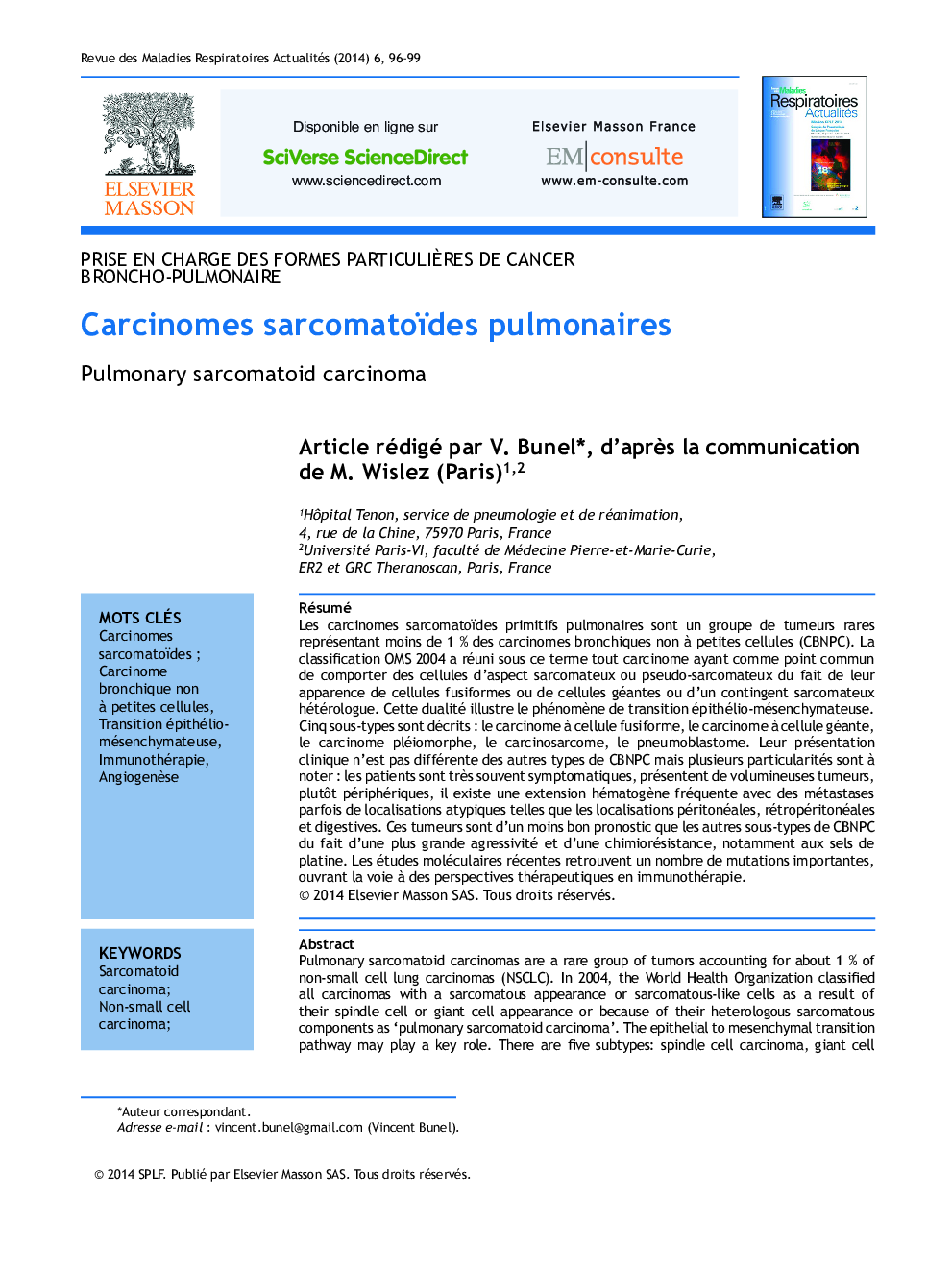| Article ID | Journal | Published Year | Pages | File Type |
|---|---|---|---|---|
| 4215683 | Revue des Maladies Respiratoires Actualités | 2014 | 4 Pages |
Abstract
Pulmonary sarcomatoid carcinomas are a rare group of tumors accounting for about 1 % of non-small cell lung carcinomas (NSCLC). In 2004, the World Health Organization classified all carcinomas with a sarcomatous appearance or sarcomatous-like cells as a result of their spindle cell or giant cell appearance or because of their heterologous sarcomatous components as 'pulmonary sarcomatoid carcinoma'. The epithelial to mesenchymal transition pathway may play a key role. There are five subtypes: spindle cell carcinoma, giant cell carcinoma, pleomorphic carcinoma, carcino-sarcoma and pulmonary blastoma. The clinical characteristics do not differ from the others subtypes of NSCLC, although there are some distinguishing features. Patients are frequently symptomatic. Tumors are voluminous and are generally located peripherally rather than centrally. Frequently, hematogenous extensions with distant metastasis occur in atypical locations such as peritoneal, retroperitoneal or digestive sites. These tumors have poorer prognosis than the other NSCLC subtypes because they are more aggressive, and prove to be chemoresistant more frequently. Recent molecular studies found a number of significant mutations, which enable us to envisage new treatments based on immunotherapy.
Keywords
Related Topics
Health Sciences
Medicine and Dentistry
Pulmonary and Respiratory Medicine
Authors
V. Bunel, M. Wislez,
